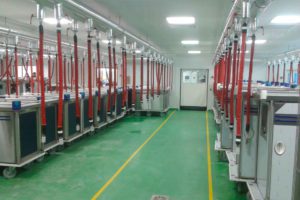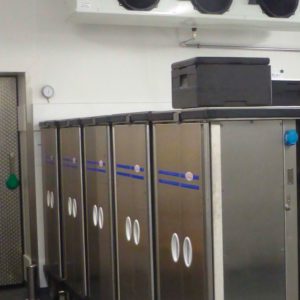In terms of cooling techniques for food transport, the use of glycol water refrigeration is becoming highly preferred, due to its advantages and ergonomics. This technique consists of using water containing glycol as a secondary fluid in the system. The technique is considered the best for transporting food, as it is environmentally friendly and reduces the environmental impacts caused by other systems.
Learn more about the glycol system
In the glycol system, there is a glycol chiller. The chiller is a machine intended to extract heat from a liquid which will then circulate in a heat exchange in order to cool the equipment.
For the glycol system, the glycol is used to cool the chiller. In the glycol chiller, there is a compressor, an evaporator, a condenser, an element that serves as a throttle and an electrical control system.
Operation of a glycol water chiller
The glycol chiller has its own specific operation. This is because the refrigerant in the chiller consumes the thermal energy of the process and turns into gas. This then circulates to the condenser which sends the heat by condensation and then by evaporation. Indeed, the heat exchange that takes place condenses the refrigerant into a mixture of gas and cold liquid which is sent back to the heating source for the cycle to resume.
The water chiller works the same way and needs to go through two steps for the heat transfer to be successful. First, heat enters the condenser water via the refrigerant vapor. Then, the hot water from the condenser is sent to the cooling tower. There, the heat is expelled into the atmosphere.
The possibilities of using a glycol chiller
The main use of glycol chillers is in the transport of food. Indeed, this technique makes it possible to preserve the quality of the food to be transported and to preserve its taste. Glycol chillers are also used in chemical processing, the pharmaceutical industry and food and beverage processing.
In breweries
This cooling technique is widely used in the brewery industry. Indeed, it allows the mixture to be cooled by reducing the temperature. It also helps to control fermentation. Also, this system can be used in emergency cooling vessels and pre-packaging. It is also the best technique for storing products.
In vineyards
In vineyards, the technique of cooling with glycol water is also used in the product fermentation process. It also serves to stabilize the temperature and cool the room.
In cider mills
Glycol water cooling is also used in cider mills to control fermentation and chill the juice.
The final product is also kept cold thanks to this system.
In distilleries
The system is also used in this field for fermentation and heat removal. In addition, the circulation between the distillation tanks and the stills is controlled by this system.
The benefits of the brine-cooling technique
The brine-cooling technique helps the environment, due to the low volume of refrigerant in the unit. It also saves energy with its high performance.
This system is also very safe, as its chemical properties help it to decrease the volume of refrigerant in the system and thus reduce any risk of leakage.
The advantages of glycol water refrigeration
This cooling technique is very effective because it:
- Does not pollute and is biodegradable;
- Presents no risk of leakage;
- Saves energy;
- Minimizes volumes;
- Does not require too much maintenance;
- Is easy to install;
- Has high potency.
Glycol water cooling has a very high performance coefficient, offering more consistent cooling and consuming less energy than a gas system. Its lifespan is also longer. In addition, the glycol water cooling is silent and does not cause any disturbing noise.



